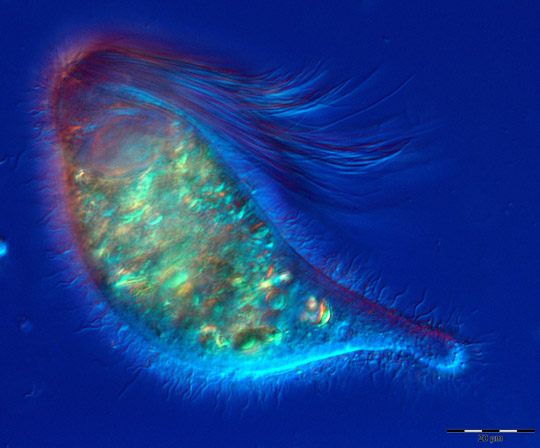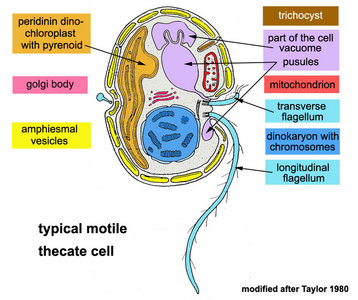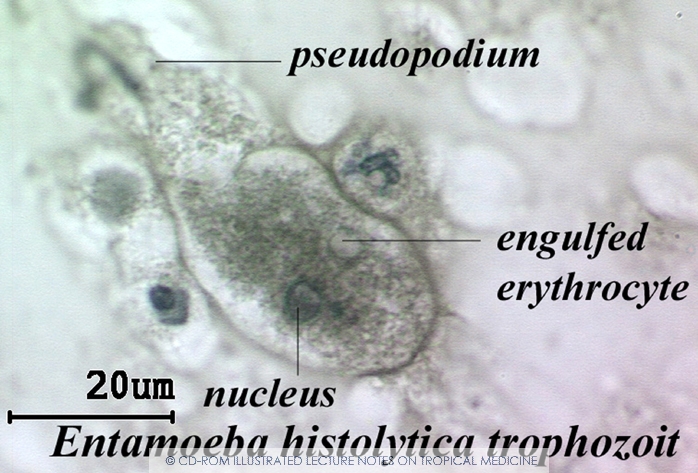Date : 10/10/14
Topic : Test 1 and protozoans
Activities
1. Test
2. Group discussion and presentation on the best method to study the topic of protozoans
Notes
Name of microbes
Protists consist of "animal-like" protozoa, "plant-like" protophyta (mostly unicellular algae), "fungus-like" slime molds and water molds. Many protists (like algae) are vital primary producers in ecosystems (plankton). Some protists (like Trypanosoma brucei and Plasmodium) cause diseases. Another definition of protists is that protists are essentially unicellular eukaryotes that either exist as independent cells or undifferentiated if in colony. Since protists as a whole are paraphyletic, some will eventually split up or abandon the kingdom.
Protozoa refer to heterotrophic species of protists that do not form filaments. They are larger than prokaryotes and is eukaryotic. They have no chlorophyll. They are motile and lack of cell wall and fruiting body. Protozoa are divided into four major groups : ciliates (Ciliophora), flagellates (Archaezoa), heliozoans, amoebas (Rhizopoda).
Slime molds (Myxostelida) are organisms that use spores to reproduce and have fruiting bodies. They normally exist as single-celled organisms, but will congregate and start moving as a single body when food is in short supply. They feed on microorganisms that live in any type of dead plant material, such as in soil, lawns, on forest floor and deciduous logs. Slime mold is not a real fungus even though it's a mold. It is classified under protista because fungus absorbs food from the environment while slime mold is like a plasmodium (a giant amoeba) that moves around slowly in decaying organic matter and eat up the bacteria.
Entodiniomorphids are group of ciliates that occur in the stomach of cattle, sheep and goat. For example, Diplodinium dendatum in cattle.
Holotrich or holotrichous are organisms that have cilia of uniform length which distributed evenly over the surface of the body.
Trypanosoma gambiense is a genus of kinetoplastids (unicellular parasitic flagellate protozoa).
Joenia is a protozoan (animal-like unicellular protozoan) that is motile. It is restricted to moist or aquatic habitat and contains non-filamentous structures. It is also a gut flagellate that can be found from the termite Kalotermes flavicollis. It has extended axostyle, attached spirachetes on body surface and tuft of flagella on the anterior that looks like horses mane.
(E.g. Joenia annectens)




Devescovina is a flagellates with an elongated body


Dinoflagellate is a single-celled organism with two flagella, occurring in large numbers in marine plankton and also found in fresh water. Some produce toxins that can accumulate in shellfish, resulting in poisoning when eaten. Some are photosynthetic, but most are mixotropic that carry out photosynthesis and ingest prey. Dinoflagellate is also the most common source of bioluminescence.

Euglenoid is a flagellated unicellular organism of a group that comprises euglena and its relatives. They are mixotrophic, most are photosynthetic but some carry out phagocytosis too. They are commonly found in freshwater, especially with high organic materials. They are endosymbiotic (live within body or cells of another organism). Euglenoids do not have cell wall but possess pellicle and flagella. They have euglenoid movement, which moves by contraction and expansion of body. Some glide rather than making euglenoid movement.


Amoeba proteus is a large unicellular, colorless or transparent protozoan. It prefers to habitat clean ponds of highly oxygenated fresh water. It is adverse to light, thus will take cover under things that provide shade such as lilly pads.

Entameoba histolytica is an anaerobic parasitic protozoan that infects the digestive tract of predominantly humans and other primates.


Balantidium coli is a parasitic ciliate protozoan that cause Balantidiasis. It is the only protozoan ciliate to infect humans. It is also the largest protozoan parasite found in humans. Balantidium coli has two stage of life, trophozoite (active, motile feeding stage) and cyst. The cysts they formed will contaminate food or water and grow into trophozoite if survive in small intestine. Trophozoites live in cecum and colon of large intestines and may encyst once faeces dry up. Symptoms of balantidiasis include diarrhea or constipation, weight loss and dysentery.


Plasmodium vivax is a parasitic protozoa found on Anophele mosquito vectors and is human pathogen that causes malaria. Symptoms of malaria include fever, chills, weakness, headache, vomiting, diarrhea, anemia, pulmonary and renal dysfunction and neurologic changes.


Toxoplasma is a parasitic spore-forming protozoan that can cause toxoplasmosis in human.
Normal flora are bacteria which are found in or on our bodies on a semi-permanent basis without causing disease.
Schizogony is a type of asexual reproduction by multiple fission. It is found in some protozoa, especially parasitic sporozoans.
Substratum is an underlying layer of rock or soil beneath the surface of the ground.
Lorica is a rigid case or shell of some rotifers (a minute multicellular aquatic animal of phylum Rotifera) and protozoans.
Encystment is a process preceding reproduction by budding, fission and spore formation. For example, the amoeba becomes circular, dehydrates and secretes a protective cyst membrane.
Pinocytosis is the ingestion of liquid into a cell by budding off small vesicles from the cell membrane.
Gullet is the passage by which food passes from the mouth to the stomach // the oesophagus.
Cytostome or cell mouth is part of a cell specialized for phagocytosis, usually in the form of a microtubule-supported funnel or groove. Food directed into cytostome is sealed into vacuoles.
African sleeping sickness is a parasitic disease of humans and other animals caused by protozoa such as Trypanosoma brucei gambiense and Trypanosoma brucei rhodesiense. Symptoms include chancre (red sore), fever, sever headaches, irritability, extreme fatigue, swollen lymph nodes, skin rash, aching muscles and joints. Those symptoms affect the quality of sleeping.
Dysentery is the infection of the intestines resulting in severe diarrhea with the presence of blood or mucus in faeces.
Particulate material is a mixture of solid particles and liquid droplets found in air. Some are large or dark enough to be seen with naked eyes, such as dust, dirt, soot or smoke.
Balantidiasis is a protozoan infection caused by infection with Balantidium coli.
Pellicle is a think skin, cuticle, membrane or film. The cilia are usually arranged on the pellicle meanwhile the cilia can also fuse togehter near the cytostome.
Obligate parasite cannot complete its life cycle without exploiting a suitable host, meaning it will fail to reproduce if it cannot obtain a host.
Endosymbiont lives within the body or cells of another organism. Example of endosymbiosis is nitrogen-fixing bacteria or rhizobia that live in root nodules on legume roots. Another example is single-celled algae inside reef-building corals.
Random facts
-
Muddiest point
- Why is the bacteria in our body called normal flora? Because to me flora means plants.
- Obligate anaerobic
- http://www.mycolog.com/CHAP1.htm
- http://www.youtube.com/watch?v=GY_uMH8Xpy0
- Devescovina - Information on Devescovina - Encyclopedia of Life
- NEW TERMITE PROTIST IMAGES | Protists
- Termite Symbiotic Protists & Prokaryotes – Stage one study. | Protists
Today our group discussed on how to study well in the topic of protozoa. My members have different ideas on the best way to study, but I personally think that we need to visualize what we learnt. So I suggested them to choose watching videos and understanding each term as our learning method. In fact some of their ideas are helpful too like drawing mind map but I still think that somehow we need some animations to reinforce our understanding. On the other hand, the method done by Choy's group, using acronyms and songs, were really creative and helpful. It's very easy to remember all the facts.
Not related to the learning outcome again. So today was my birthday and I didn't expect that my university friends will celebrate with me because I thought most of them didn't know about it. At last, many surprises made by them and I'd received many blessings from them. I felt really happy and warm, thank you guys !

No comments:
Post a Comment